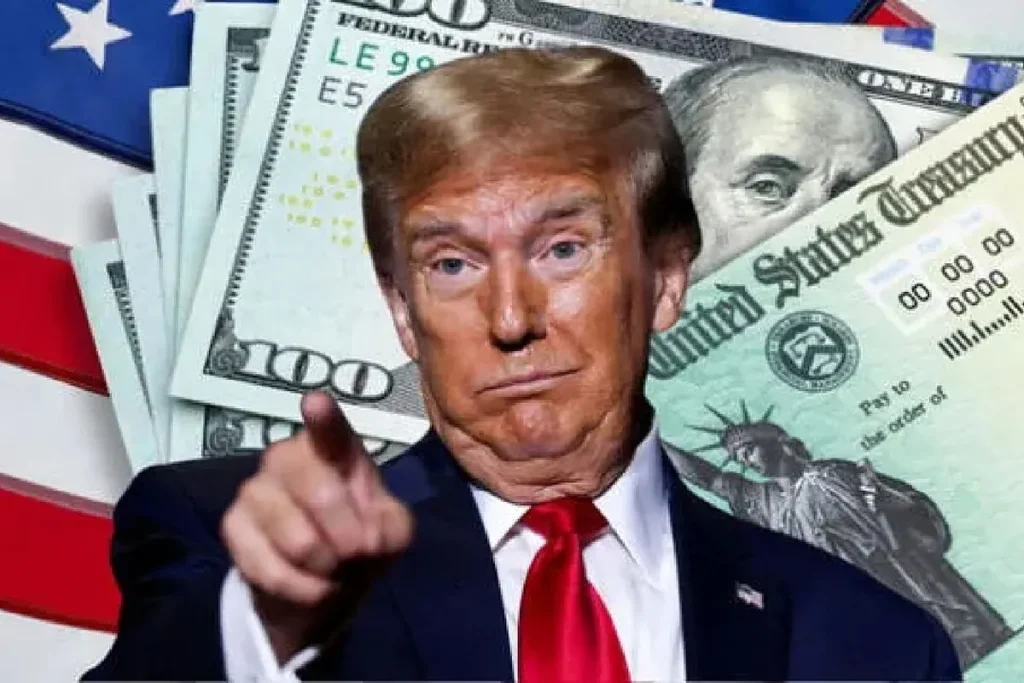Listen to the article
Since taking office, President Joe Biden has signed one stimulus bill – the American Rescue Plan Act in March 2021 – which included $1,400 direct payments to eligible Americans. No additional federal stimulus checks have been issued since then, though former President Donald Trump has made new economic relief promises a centerpiece of his 2024 campaign.
During recent campaign appearances, Trump has repeatedly pledged to send $2,000 stimulus checks to American households if elected in November. The proposal has gained traction among his supporters, particularly as inflation concerns continue to weigh on household budgets across the country.
“When I’m back in the White House, we’re going to send out those $2,000 checks,” Trump told a crowd in Michigan last week. “And we’ll pay for it with my tariff plan on countries that have been taking advantage of us for decades.”
The former president’s stimulus proposal links directly to another key element of his economic platform: expanding tariffs on imported goods. Trump has proposed tariffs as high as 60% on Chinese imports and at least 10-20% on products from other countries, including longtime allies.
Economic experts remain divided on the feasibility of funding direct payments through tariff revenue. Mark Zandi, chief economist at Moody’s Analytics, expressed skepticism about the math behind the proposal.
“Even with aggressive tariffs, the revenue generated would fall significantly short of what’s needed to fund $2,000 payments to American households,” Zandi said. “We’re talking about hundreds of billions of dollars in potential costs, while tariff revenue would likely generate tens of billions at most.”
Other economists note that tariffs function essentially as taxes on consumers. When tariffs are implemented, the costs are typically passed along to American businesses and consumers through higher prices, potentially exacerbating the inflation concerns that have dominated economic discussions for the past two years.
Joseph Brusuelas, chief economist at RSM US, explained that “tariffs are ultimately paid by domestic consumers, not foreign governments. Any stimulus benefit could be offset by higher costs for everyday goods.”
The Congressional Budget Office has not yet provided formal analysis of Trump’s specific proposal, making it difficult to assess the exact financial implications. However, previous stimulus packages offer perspective on potential costs. The 2021 American Rescue Plan’s direct payment component cost approximately $410 billion, according to Treasury Department figures.
Biden campaign spokesperson James Singer criticized Trump’s proposal as “economically unsound” and suggested it would “drive up prices for American families while adding to the deficit.”
Trump campaign officials defend the plan, arguing that tariffs would not only generate revenue but also incentivize manufacturing to return to the United States, creating jobs and economic growth that would offset costs.
Stephen Miller, a senior adviser to Trump, said the former president’s economic plan should be viewed holistically. “President Trump is committed to rebuilding American manufacturing, lowering costs for families, and providing direct relief during his first days back in office,” Miller stated.
For Americans still feeling financial pressure from inflation, the promise of additional stimulus has clear appeal. A recent Morning Consult poll found that 62% of registered voters support the idea of additional direct payments, though support drops to 47% when told the payments might contribute to higher consumer prices.
As the November election approaches, economic relief proposals from both candidates will face increased scrutiny from voters concerned about inflation, job security, and household finances. Whether Trump’s stimulus checks materialize will ultimately depend on election results, Congressional support, and the economic conditions facing the country in 2025.
While the prospect of additional financial relief resonates with many voters, economists caution that the relationship between tariffs, stimulus payments, and overall economic health involves complex tradeoffs that extend beyond campaign promises.
Verify This Yourself
Use these professional tools to fact-check and investigate claims independently
Reverse Image Search
Check if this image has been used elsewhere or in different contexts
Ask Our AI About This Claim
Get instant answers with web-powered AI analysis
Related Fact-Checks
See what other fact-checkers have said about similar claims
Want More Verification Tools?
Access our full suite of professional disinformation monitoring and investigation tools




7 Comments
As an investor, I’ll be closely watching how this proposal develops and any potential impacts on the commodity markets. Seems like it could create some uncertainty in the near term.
I’m always skeptical of campaign promises that seem to rely on questionable funding mechanisms. Curious to see how this plays out, but I’m not holding my breath on the $2,000 checks materializing.
As an investor in mining and commodities, I’m keeping a close eye on this. Any new trade barriers or tariffs could significantly impact supply chains and pricing for key materials like copper, lithium, and uranium.
It’s good to see the proposal getting scrutiny. Stimulus checks had a major impact during the pandemic, but the details on funding will be crucial. I have some skepticism about relying on tariffs as the source.
Interesting analysis of Trump’s stimulus check proposal. I’m curious to see how the tariff plan would actually work to fund the $2,000 checks. Seems like it could be a risky gamble economically.
The mining and energy sectors are so sensitive to economic and trade policy changes. This proposal could create a lot of volatility if it gains momentum.
Thanks for the in-depth analysis. While the stimulus idea may have populist appeal, the specifics around funding it through tariffs raise a lot of red flags for me as an investor in this space.